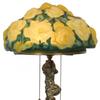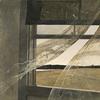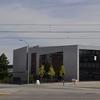Major Alfred Sisley Retrospective Debuts at Greenwich's Bruce Museum
- GREENWICH, Connecticut
- /
- January 16, 2017
The Bruce Museum and the Hôtel de Caumont Centre d’Art in Aix-en-Provence, France, are mounting a major monographic exhibition of the art of the French Impressionist Alfred Sisley (1839-1899). The first retrospective in more than 20 years of this purest of all the major Impressionists, Alfred Sisley (1839-1899): Impressionist Master spotlights about 50 of Sisley’s paintings, which come from private collections and major museums in Europe and North America. The Bruce Museum in Greenwich, Connecticut, will premiere the exhibition, January 21 to May 21, 2017, and is the only venue in the United States. The show will then travel to France, where it will be on exhibit from June through October 2017.
Born in Paris in 1839 to well-to-do British parents, Alfred Sisley at first intended to pursue a career in commerce and spent two years in London from 1857 - 1859. During this time, he visited museums, studying both the Old Masters and the great British landscape painters John Constable and J.M.W. Turner. On his return to Paris, he was determined to become a landscape painter and enrolled in Charles Gleyre’s studio, where he met the future Impressionists Claude Monet, Pierre-Auguste Renoir and Frédéric Bazille. Initially Sisley worked in the naturalistic landscape tradition of the Barbizon School but increasingly adopted a proto-Impressionistic style, recording specific locations in a sequence of visual records of different times of the day, weather conditions and seasons. In so doing he charted comprehensively and from multiple points of view the landscapes of his residences in the villages along the Seine west of Paris and beyond the Forest of Fontainebleau at VeneuxNadon and Moret-sur-Loing.
Sisley was first and foremost a painter of light. He knew how to imbue all of his paintings with it. One could say that light floods his landscapes, deliciously bathing even the most modest of details. - Anonymous, “Echo de Paris,” Le Gaulois 1899
While his landscapes are generally modest in scale and tonally relatively restrained, the magic with which he was able to capture the effects of the light dancing on water, the brilliance of winter sun on snow and hoar frost, the movement of the wind in trees, the exploration of the depth of a rural scene, and the vastness of the skies create compelling works akin to poetry. They demand close, quiet contemplation and their re-evaluation is well overdue.
His very delicate, lively sensibility was at ease before all the glories of nature… Sisley understood lovely light, the transparency of the envelope of air, the mobility and changeability of reflections, the speed of movement. – Octave Mirbeau, 1892
The exhibition Alfred Sisley (1839-1899): Impressionist Master is organized by the Bruce Museum, Greenwich, Connecticut and Culturespaces. The show is curated by MaryAnne Stevens, independent art historian and curator of the 1992/3 and 2002/3 retrospective exhibitions on the artist. It is accompanied by a fully illustrated catalogue published by Editions Hazan. Contributors to this volume, Richard Shone, who wrote a book on the painter, and Kathleen Adler, a 19th -century French specialist, bring new insights that ensure the publication will be an indispensable reference on the artist and his oeuvre.
Designated a historical monument in France and owned by Culturespaces, the Hôtel de Caumont is one of the most beautiful private mansions dating from the 18th century in Aix-en-Provence. The mansion was recently restored and has been home to an art and cultural center since May 2015.











100x100_c.jpg)


